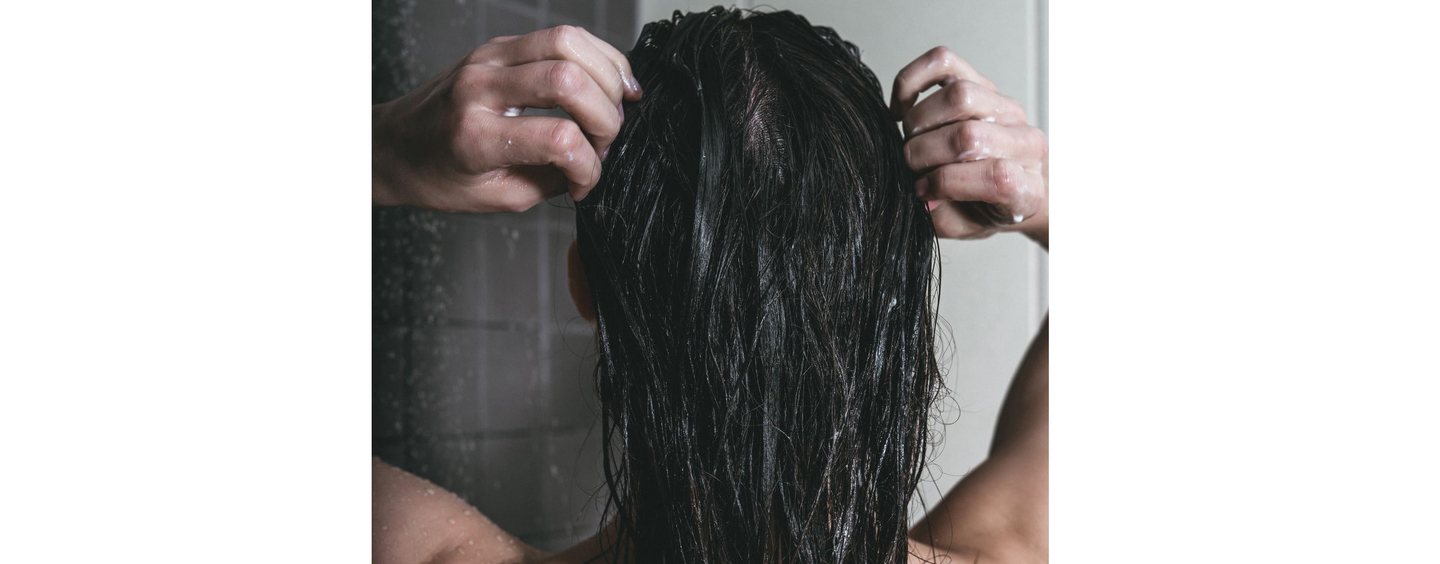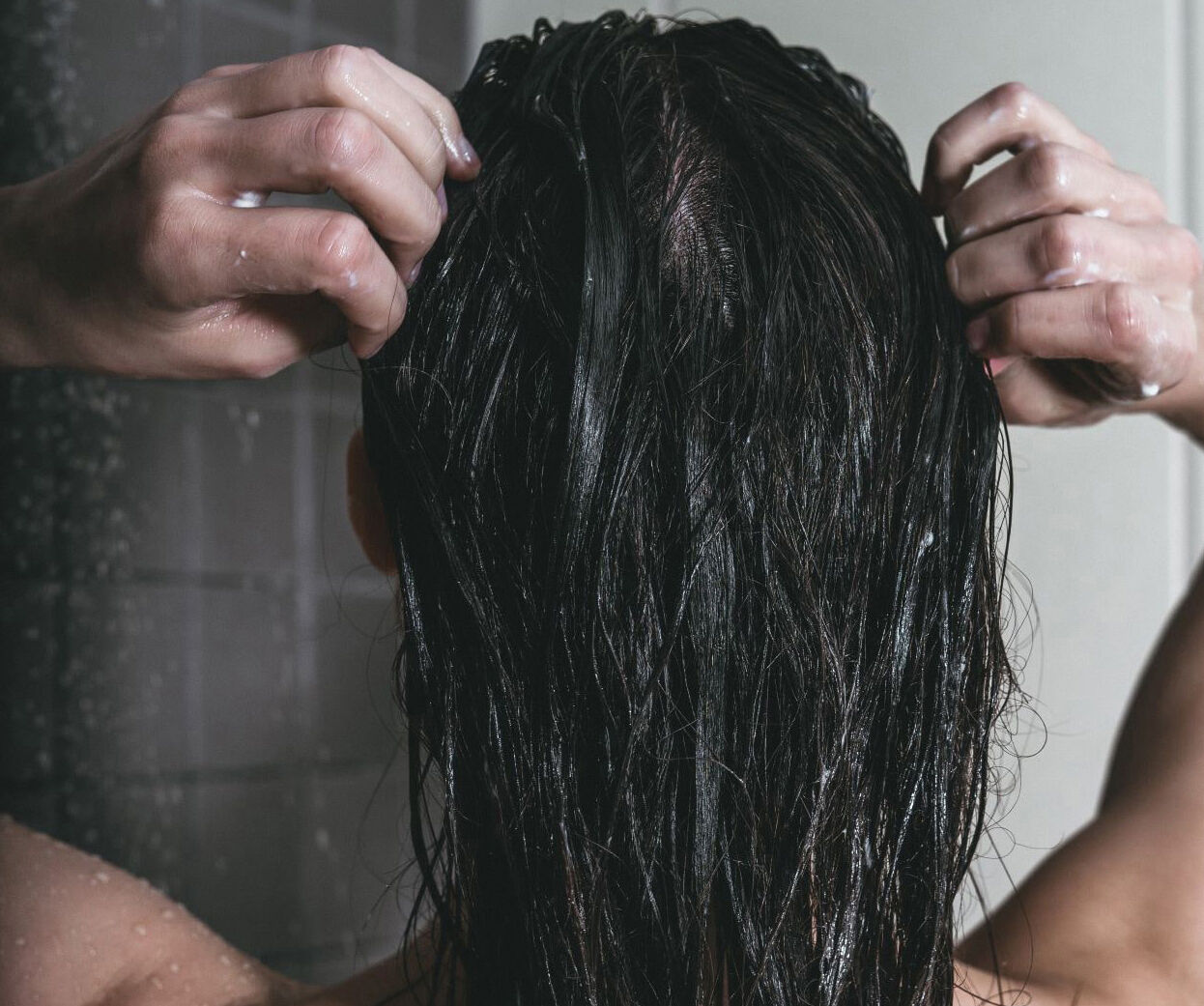How To Care For High Porosity Hair



If you are struggling with dryness, frizz, and lack of shine despite your hair care routine, you may have high porosity hair. This type of hair acts like a sponge and absorbs moisture and nourishment quickly, which should make it healthier, however it usually ends up dry and lifeless. That’s because your cuticles can’t retain moisture like low and medium porosity hair does. However, high porosity hair can be kept healthy and lustrous with moisturising and sealing products. At the same time, you should avoid or reduce heavy chemicals, heat exposure and mechanical damage as much as possible. A simple change of routine and opting for premium, high-performing hair products will turn your life around, even if you feel cursed with high-maintenance hair!
What is high porous hair?
Hair texture, elasticity, and porosity determine the quality of your strands and how resilient your hair is when exposed to different factors. While all three traits are influenced by genetics, porous hair is often the consequence of health issues, poor maintenance, chemical, heat and UV exposure. High porosity hair can easily absorb moisture, but it has difficulties retaining it. Besides water, such hair absorbs chlorine, sea salt, humidity and other harmful elements that affect its well-being. After the moisture evaporates, strands get parched. Thus, they become brittle, dry and dull, which eventually leads to split ends, loss of shine and breakage.
How to test your hair porosity?
An unskilled eye might find it hard to determine the strand’s moisture-retaining ability. While professional advice and assistance are always welcome, you can conduct simple tests to check if your hair is damaged at home. All you need is a glass of water and a couple of strands not longer than 2.5 inches. After you dip the hairs in the water, wait for a couple of minutes before analyzing the results. High porous hair tends to sink to the bottom, while hair with low porosity floats to the top. Strands with optimum porosity will rest in the middle of the glass.


Boost your hair with vegetable proteins
The journey to achieve a healthy and magnificent look of your hair starts with determining a high-performing washing regimen. The goal is not just to choose the product for a specific issue but also to eliminate harmful ingredients from your routine. Scientific hair study shows that vegetable protein in hair products significantly boosts strength and smoothness in damaged hair. The restorative enzymes and amino acids that help bind moisture and improve elasticity come from fruits and vegetables such as papaya, pineapple, green pea, and shea nuts. Thus, opting for repairing cleansing treatment to clean and condition your high porosity hair is a vital step toward achieving your desired strand properties.
Opt for a slightly lower water temperature than usual
We would probably never assume that the water temperature could impact the hair features. Still, a simple change in your hair-washing routine could improve the hair issues you’re facing. Hot water is more pleasant on the scalp, helping to get rid of build-ups better. At the same time, it opens the cuticles to provide the shaft with the chance to absorb nutrients. Still, since high porous hair already has opened cuticles, washing it with hot water can dehydrate it. It can also affect sebum production, and enhance colour fade in dyed hair.
In addition, washing hair with cold water has many benefits. It will help close the cuticle and trap the moisture and nourishment from your haircare products. That’s why many stylists combine warm and cold water rinses in their sessions. Warm water helps clean scalp buildup while rinsing strands with colder water temperatures can achieve optimum results.


Dry your hair with soft cotton towels
Whether it comes to caring for high porosity hair or fine and delicate hair prone to thinning, it’s vital to avoid potential mechanical damage as much as you can. Many people don’t put much thought into a simple routine such as wiping hair with a towel because they’re unaware of its fragility when wet. After the hair gets wet, strand proteins (keratin) form weaker hydrogen bonds. While moisture gives it temporary elasticity and a false appeal of resistance, the stretching can bend the cuticle out of place and damage the hair. Therefore, any rough treatment, including towel wiping, could harm it. Instead of wrapping and rubbing your hair in just any towel, opt for soft natural fabric with high absorbent properties. Gently tap the wet strands before leaving them to dry.
How to know which hair products are best for your hair issues?
When struggling to compensate for lack of moisture, it’s necessary to add shampoos, conditioners and masques with oils and butter to your mending hair regimen. Avoid products with paraben and sulphates. Instead, focus on shampoos and conditioners with natural ingredients that provide intense hydration, nurture, and have a rich antioxidant effect.
Use oils to help lock the moisture
Hydration plays a key role when caring for parched and porous hair. However, such hair loses moisture as fast as it absorbs it. To keep the nourishment and lock moisture, you need to seal it with butter and oils. And while most sealants can feel heavy on the hair, some oil-based products with rejuvenating properties can be weightless and still promote elasticity, shine and help replenish the hair.
Let it air dry!
One of the main features of high porosity hair is its inability to dry quickly. People with low porosity hair can air dry the strands within an hour. Still, hair that quickly absorbs moisture takes much more time.
It can be tempting to just blow-dry every time you wash your hair. However, parched strands could use the time-out from heat-induced tools that dry them even more. Naturally, you won’t have the luxury of air-drying your hair all the time. So, the next time you reach for the blow-dryer, don’t forget to include leave-in heat protective products in your hair routine!
In-salon treatments
Since porous strands have raised cuticles, your shaft has many gaps that could benefit from protein treatment. But with so many products that promise but rarely deliver good results, how can you know which to choose? Only a hair specialist can assess and customise your treatment to create the best blend of deep conditioning, nourishment, and protection for damaged and weak hair. Porosity is just one symptom that is a cause or a consequence of many other hair issues. Treating your hair with the occasional restorative in-salon treatment will do wonders for any hair concern!
Use special brushes for your hair type
It may take some time and experimentation to find the type of brush that fits you perfectly. Still, bear in mind that hair with high porosity requires soft bristles that can easily detangle knots and improve natural gloss.
If your hair is prone to tangling, brushing it when it’s wet might seem like an easy way to control it. However, it’s vital to avoid combing high porosity hair before it dries. Wet hair might look “more obedient” than dry hair, but in fact, it bends and breaks without us even noticing the damage. The solution? Hydrate your coarse, wavy, curly or frizzy hair with leave-in detangler spray that will make it silky and more manageable for dry brushing.
Conclusion
High porosity hair = higher maintenance. By hydrating your hair and introducing the above recommendations to your routine, you will improve its elasticity, making it more manageable, shinier and less susceptible to damage. By staying consistent in providing your scalp with nourishment, vitamin intake, and rejuvenating regimens, you can improve hair features and transform the state of your strands forever!


